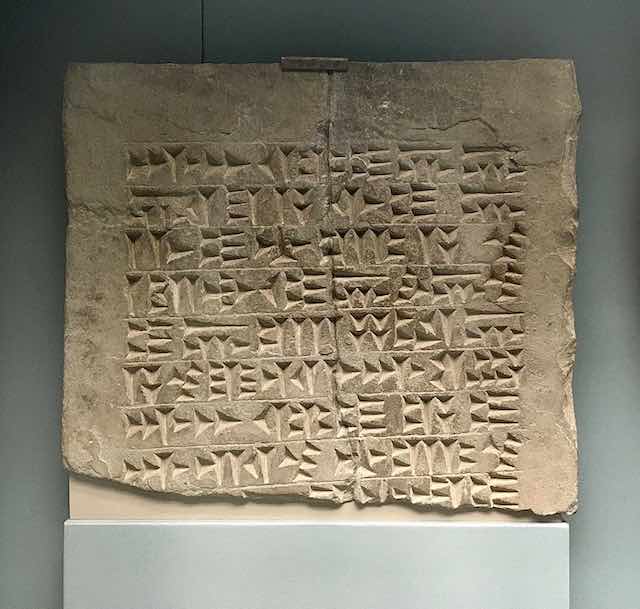The Rhythm for Reading blog
Knowledge, Culture and Control Part 1
4 February 2020Scientific knowledge is best developed in a context of free speech. Arguing for free debate, where being mistaken or wrong is integral to scientific discovery, Rovelli, in his wonderful book, ‘Anaximander’ charts the link between the history of the Greek alphabet and the beginnings of scientific thinking.
The earliest writing
The first form of writing, known as cuneiform was invented in 3400 BCE in southern Iraq, as described by art historian, Zaineb Bahrani. According to Bahrani, the earliest writing was pictographic, which was straightforward enough to decipher, but expanded when the signs for ox and fish and so on came to be used for unrelated objects and ideas, based on a system of association via similar sounds and meanings. This partly phonetic and partly pictographic code became abbreviated into cursively written wedge-shaped signs on tablets of clay, which were systematised and adopted throughout the ancient Near East.
The oldest script to be discovered was written in Uruk, in the Sumerian language, - a language unrelated to Semitic, Indo-European, Turkie or other language groups of that era. The script was quickly adopted into the Akkadian language, which was an early Semitic language, a relation of modern-day Hebrew, Arabic and Syriac-Aramaic. The first word lists and directories for interpreting the script were compiled in the third millennium BCE as the Mesopotamians became the first translators. The adoption of the script for diplomatic purposes spread widely across the region, including kingdoms of Babylonia, Syria and Egypt.
The first professional writers
According to Bahrani, the importance of connecting words with things, connecting writing with reality, was that it generated intellectual thought and scientific reasoning. The script offered a representational system with the capacity to signify the physical world as well as abstract concepts. The standardisation of the script provided a reliable means of communication and had implications for the Mesopotamian world view. However, detailed knowledge of the script’s 800 characters was protected by the scribes and mainly used for political ends, to reinforce the legitimacy of the semi-divine dynastic rulers, claiming a lineage apparently descended from heaven. The illustration here, shows a cuneiform inscription on a stone tablet dedicated to the god Haldi at a temple built by Menua, King of Urartu, in east Turkey dating from about 700 BCE.

Rovelli described a similar situation in Greece in the second millennium BCE. During this era, the Mycenaean period, the Greeks dominated Crete, Rhodes, Cyprus, Troy, Phonecia, Byblos and Palestine. The Mycenaean civilisation had inherited the well-known script, Linear B from the ancient Cretans. Linear B was used intensively in Crete during a period when the court possessed a highly organised administrative system of taxation, military enlistment and record keeping of ownership of property and slaves, all of which was managed by the professional scribes of the central palace. Here too, we see scribes enforcing political control through the power of the written word.
Greek trade with neighbouring nations resumed in the seventh and eighth centuries BCE, following the collapse of the Mycenaean civilisation in 1000 BCE and a period of economic and social difficulty. A new style of writing was inherited from the Phoenicians and Caananites at about 750 BCE. The Phoenician alphabet contained only consonants, whereas the Canaanites had developed a simplified system in which vowel sounds were used and this reduced the number characters to 24. As an Indo-European language, Greek was phonetically simpler than the Semitic languages and the new alphabet, was used to directly represent the utterances of the human voice - a system that did not require word lists, but could be deciphered without an arduous apprenticeship.
Scientific knowledge
So when writing became accessible for Greek citizens in the seventh and sixth centuries BCE, knowledge was no longer exclusively for the privileged, the scribes and the autocratic kings. Rather, writing was widely shared by the emerging ruling class at the birth of democracy, which relied upon forthright public criticism and open debate.
Public debate among the ruling class replaced the absolute power of semi-divine kings and traditional wisdom of priests. Weak ideas and theories were dismissed through this new system of shared power. Rovelli urges us to consider that it is through sharing, criticising and scrutinising knowledge, that we uphold scientific values. Sharing, criticising and scrutinising ideas and theories is the most rigorous way to test knowledge. Weaker theories and ideas can be rejected, and stronger ones can be refined in this way. We must guard against the desire for complete knowledge or definitive knowledge. This would involve closed-mindedness. Rather, science produces the best available knowledge at the time from an open-minded, questioning perspective.
Rovelli makes an important point: From the perspective of scientific thinking, knowledge expands because of a lack of certainty, and is driven by an awareness of the immensity of human ignorance. A lack of certainty is a strength rather than a weakness. It is a strength fuelled by important traits that are cultivated by scientists: the confidence to ask questions, the courage to observe and to critique, and the persistence to challenge with a readiness to radically rock the boat.
References
Bahrani, Z. (2017) Mesopotamia: Ancient Art and Architecture, Thames & Hudson, London
Rovelli, C. (2011) Anaximander, (Trans. Marion Lignana Rosenberg), Westholme Publishing, Yardley, Pennsylvania
